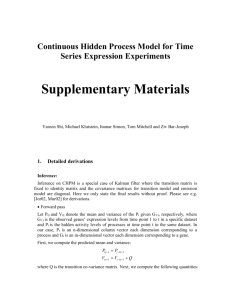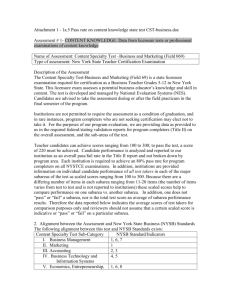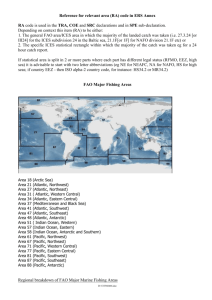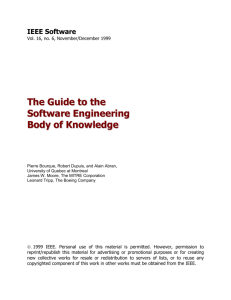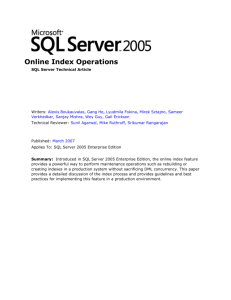Appendix 1. Summary of distribution center, spatial arrangement
advertisement
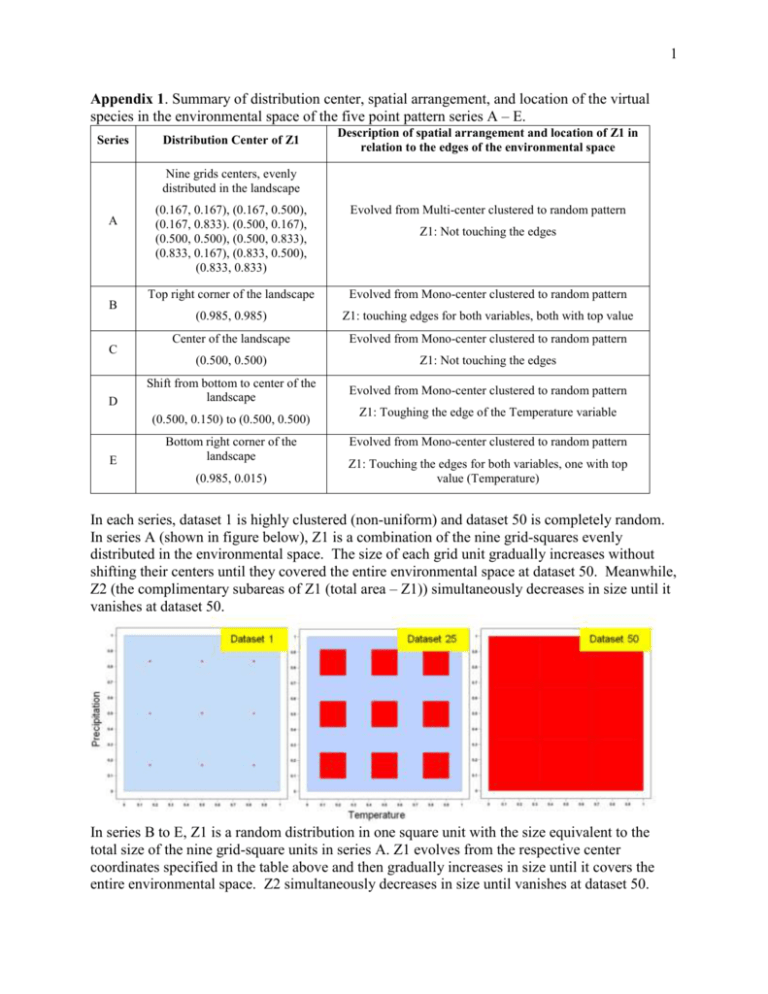
1 Appendix 1. Summary of distribution center, spatial arrangement, and location of the virtual species in the environmental space of the five point pattern series A – E. Series Distribution Center of Z1 Description of spatial arrangement and location of Z1 in relation to the edges of the environmental space Nine grids centers, evenly distributed in the landscape A B C D (0.167, 0.167), (0.167, 0.500), (0.167, 0.833). (0.500, 0.167), (0.500, 0.500), (0.500, 0.833), (0.833, 0.167), (0.833, 0.500), (0.833, 0.833) Evolved from Multi-center clustered to random pattern Top right corner of the landscape Evolved from Mono-center clustered to random pattern (0.985, 0.985) Z1: touching edges for both variables, both with top value Center of the landscape Evolved from Mono-center clustered to random pattern (0.500, 0.500) Z1: Not touching the edges Shift from bottom to center of the landscape Evolved from Mono-center clustered to random pattern (0.500, 0.150) to (0.500, 0.500) E Bottom right corner of the landscape (0.985, 0.015) Z1: Not touching the edges Z1: Toughing the edge of the Temperature variable Evolved from Mono-center clustered to random pattern Z1: Touching the edges for both variables, one with top value (Temperature) In each series, dataset 1 is highly clustered (non-uniform) and dataset 50 is completely random. In series A (shown in figure below), Z1 is a combination of the nine grid-squares evenly distributed in the environmental space. The size of each grid unit gradually increases without shifting their centers until they covered the entire environmental space at dataset 50. Meanwhile, Z2 (the complimentary subareas of Z1 (total area – Z1)) simultaneously decreases in size until it vanishes at dataset 50. In series B to E, Z1 is a random distribution in one square unit with the size equivalent to the total size of the nine grid-square units in series A. Z1 evolves from the respective center coordinates specified in the table above and then gradually increases in size until it covers the entire environmental space. Z2 simultaneously decreases in size until vanishes at dataset 50. 2 Appendix 2. Visualization of basic types of point patterns. Uniform pattern describes the spatial pattern in which the density of points in any subarea of the interested region is equal if the size and shape being the same. Conversely, non-uniform pattern describes the pattern with the density of points varies between one subarea and the other. Quantitatively, a regular point pattern (a) means the distance between each point and their paired points remains the same for one or more specified directions (in this case vertical and horizontal) within the focused area; while a random point pattern (b) means the probability of containing a point in one subarea is the same as any other subarea of the same size and shape, regardless of the location of these subareas. A gradient pattern means (c) the probability of locating one individual point varies inversely with distance to the points have already been located from single-clustered center; while a clustered pattern (d) means probability of locating one individual point varies inversely with distance to the points have already been located, but allowed to have multi-clustered centers. a b c d 3 Appendix 3. Binned calibration method. Red line corresponds to the perfect calibration of the model, where the plotted points fall on the 1:1 line. The coefficient of the regression line (black) represents the overall calibration of each run from the individual datasets (1 to 50) of each series 4 Appendix 4. Point patterns of species occurrence data in the extracted environmental space (from the native range) for Prosopis farcta (A) and Imperata cylindrica (B), represented by the component scores of the dimension reduction results of PCA. Red dots represent the occurrence data locations reflected in the environmental space. Boundaries of the environmental space correspond to their environmental space within the native ranges. The extents of the environmental space reflect the relative size of the native ranges for these two species 2.862


